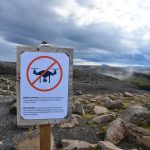Semana Santa, Holy Week – Antigua, Guatemala (02.04.18)
In the Guatemalan central highlands town of Antigua, Holy Week has been celebrated for nearly five hundred years, ever since the Spanish arrived in 1524. Today it is a UNESCO Heritage Site and home to one of the Christian world’s most extravagant and colourful pre-Easter celebrations, eagerly anticipated by locals and visitors of all ages.

People from all over the world descend on this charming 16th century town soaked in Renaissance-inspired ambiance, to experience the sombre, yet elaborate, Holy Week processions and the altogether carnival-like atmosphere.
With the town’s history influenced by volcanic activity, earthquakes, avalanches, floods and chapters of oppressive politics, this capital of the Captaincy-General of Guatemala has always danced to its own tune. And in this Easter week period it ups the anti even further. With its engaging low-rise colonial Barroco antigueno architecture, colourful mix of street scenes, plazas, churches and enthusiastic crowds, the stage is set for a passionate re-enactment of Christ’s final days, before crucifixion.

In addition to Nomadic Thoughts delight in arranging trips to this region throughout the year, our charity New Lifeline has been involved in an exciting number of NGO and local charity programmes over the years. Antigua is always a favourite hitching post to the enthralling Central Highlands regions, including Lake Atitlan and beyond.
These photos, taken by my son Max when he was working for New Lifeline, illustrate the intensity and exuberance of the town’s Semana Santa tributes.

Elaborate processions make their way through the cobbled streets of Antigua each day during Holy Week, but the greatest outpouring of compassion, pomp and ceremony is saved for Good Friday, Holy Saturday and Easter Sunday.
Following traditional Easter week re-enactments of Christ’s last journey from condemnation to crucifixion, the Stations of the Cross are celebrated with huge parades, enormous, extravagantly decorated floats and a huge number of painstakingly coloured sawdust mosaic creations (alfombras). The delicate alfombras require a subtle balance of artistry over endurance. People gently sieve colourful dust through pre-cut stencils, while leaning on suspended wooden boards and hardened street corners. All this takes months to prepare and weeks and days to finalise. As all-inclusive community projects they match the most ambitious carnival preparations anywhere in the world.

Floats up to twenty metres long are carried by as many as a hundred cucuruchos (bearers). Swaying rhythmically from foot to foot (so as not to trip over each other), the purple-robed brotherhoods are followed by equally focused sisterhoods carrying differently decorated displays of the figures of a suffering Jesus and Holy Virgin of Sorrow.

The carnival atmosphere really takes off when the sombre mood lifts as Easter Sunday ushers in the joy of Christ’s resurrection. It is an enthralling spectacle as the vast crowds noticeably up the tempo from a mood of sobriety to celebration, with an outpouring of colour provided by bright flags, lively bands and fireworks.






































